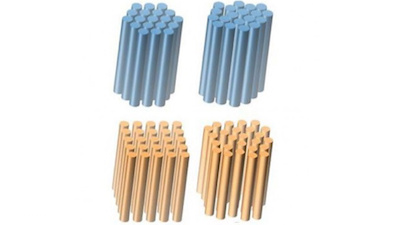Researchers at the Jožef Stefan Institute have identified an unexpectedly general set of rules that determine which molecules can cause the immune system to become vulnerable to the autoimmune disorders lupus and psoriasis. Autoimmune diseases strike when the body attacks itself because it fails to distinguish between host tissue and disease-causing agents, or pathogens. When a healthy person is infected by a virus, viral DNA can activate the immune cells via a receptor called TLR9. The receptor triggers the cells to send signalling molecules called interferons to initiate a powerful defensive response. In people with lupus or psoriasis, these cells are activated by their own DNA, or self-DNA. A team of scientists has shown that the process of DNA-induced amplification of interferon production is more physical in nature than had been expected. An interplay of electrostatics and multivalent binding results in multivalent activation: only those complexes with a DNA interstrand spacing corresponding to the dimensions of the toll-like receptor binding sites trigger a strong immune response.

